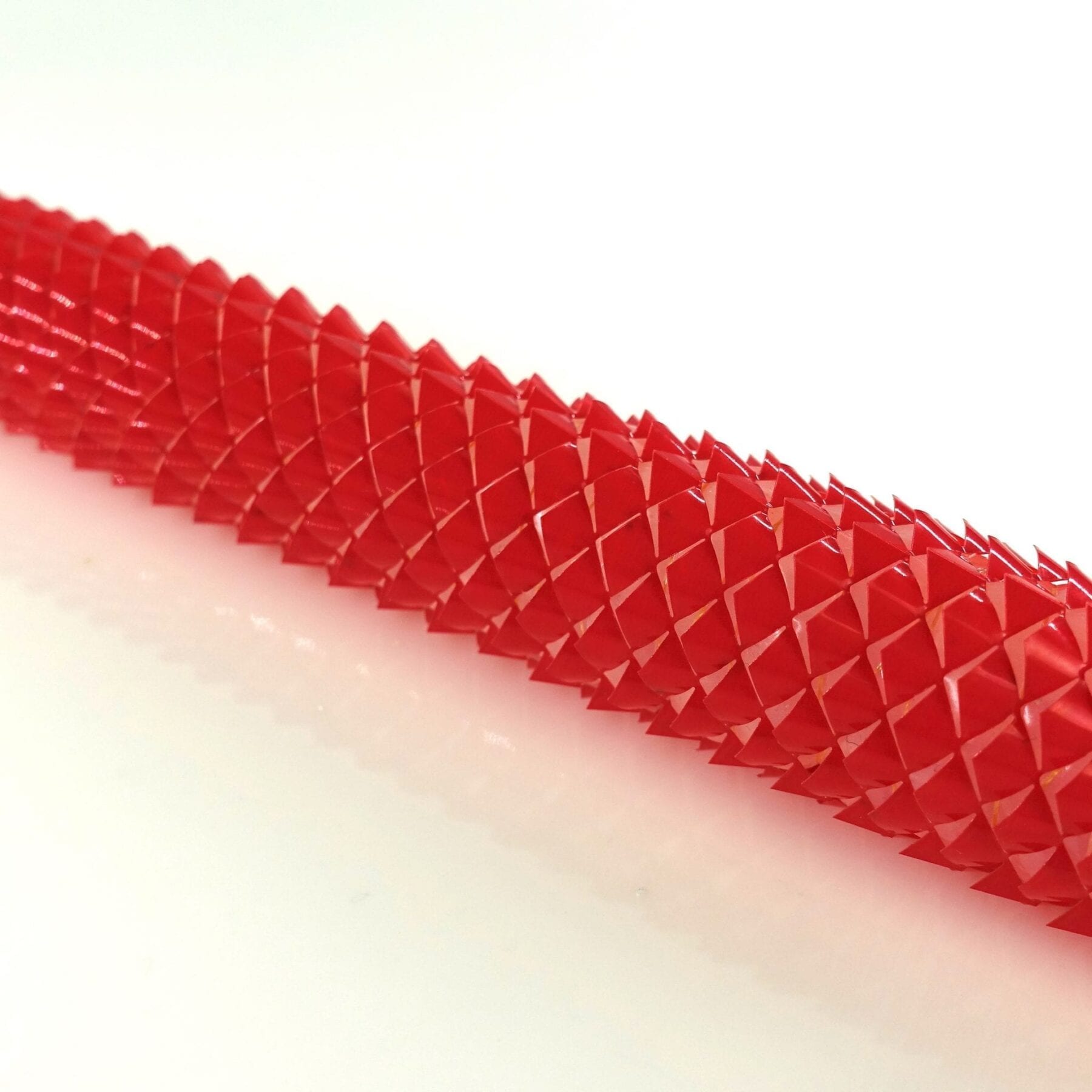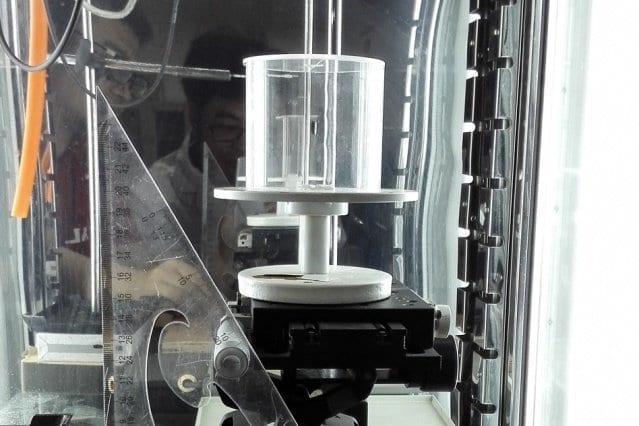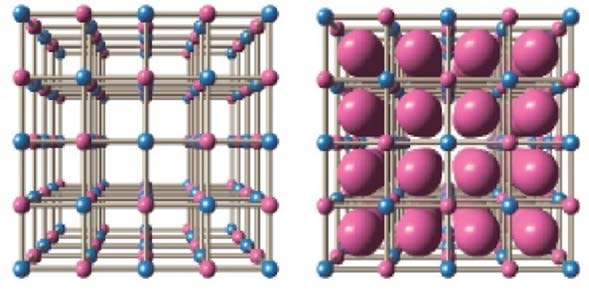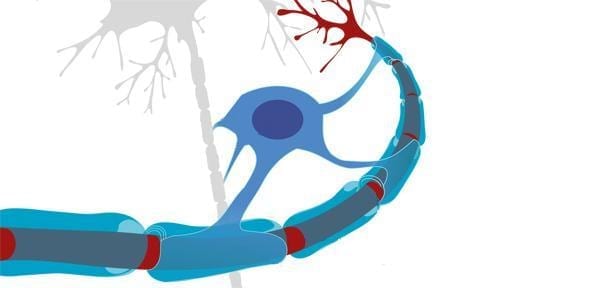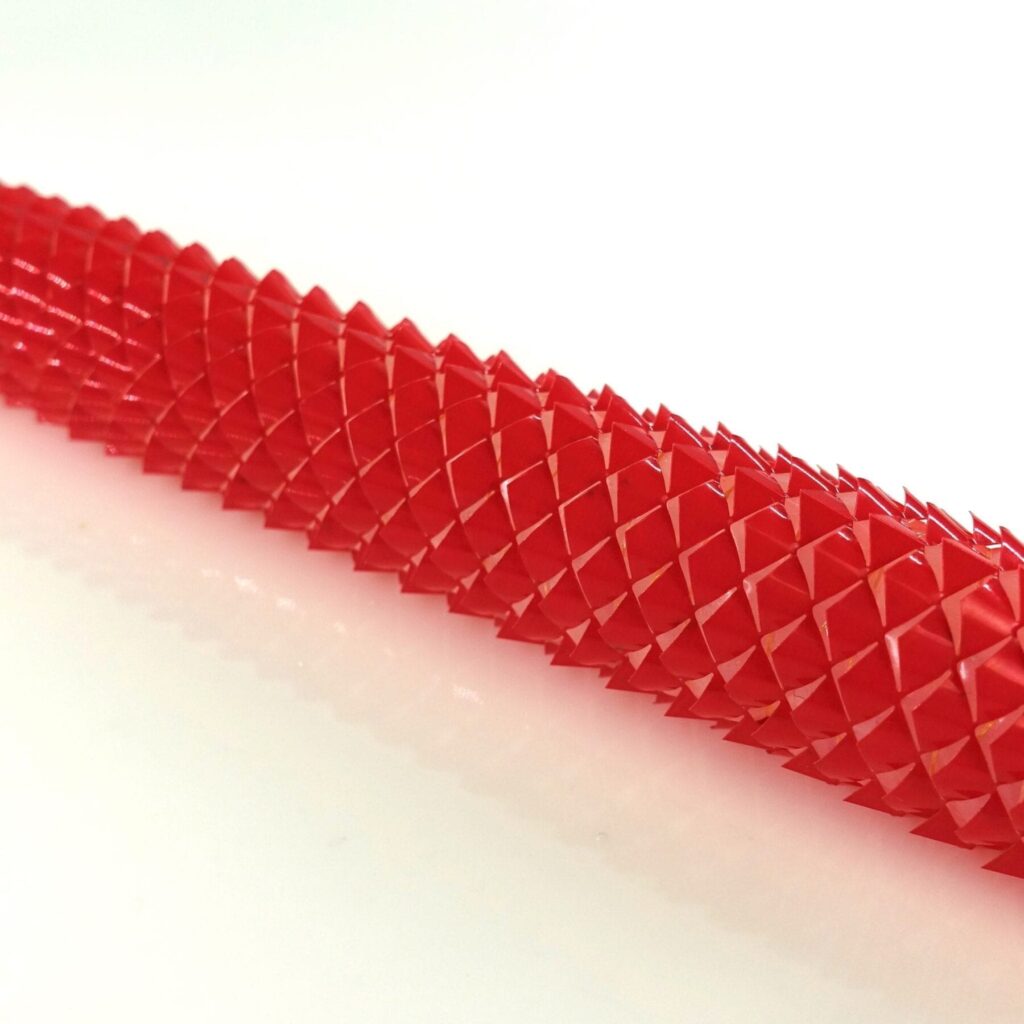
Who needs legs? With their sleek bodies, snakes can slither up to 14 miles-per-hour, squeeze into tight space, scale trees and swim. How do they do it? It’s all in the scales. As a snake moves, its scales grip the ground and propel the body forward — similar to how crampons help hikers establish footholds in slippery ice. This so-called friction-assisted locomotion is possible because of the shape and positioning of snake scales.
Now, a team of researchers from the Harvard John A. Paulson School of Engineering and Applied Sciences (SEAS) has developed a soft robot that uses those same principles of locomotion to crawl without any rigid components. The soft robotic scales are made using kirigami — an ancient Japanese paper craft that relies on cuts, rather than origami folds, to change the properties of a material. As the robot stretches, the flat kirigami surface is transformed into a 3D-textured surface, which grips the ground just like snake skin.
The research is published in Science Robotics.
“There has been a lot of research in recent years into how to fabricate these kinds of morphable, stretchable structures,” said Ahmad Rafsanjani, a postdoctoral fellow at SEAS and first author of the paper. “We have shown that kirigami principles can be integrated into soft robots to achieve locomotion in a way that is simpler, faster and cheaper than most previous techniques.”
The researchers started with a simple, flat plastic sheet. Using a laser cutter, they embedded an array of centimeter-scale cuts, experimenting with different shapes and sizes. Once cut, the researchers wrapped the sheet around a tube-like elastomer actuator, which expands and contracts with air like a balloon.
When the actuator expands, the kirigami cuts pop-out, forming a rough surface that grips the ground. When the actuator deflates, the cuts fold flat, propelling the crawler forward.
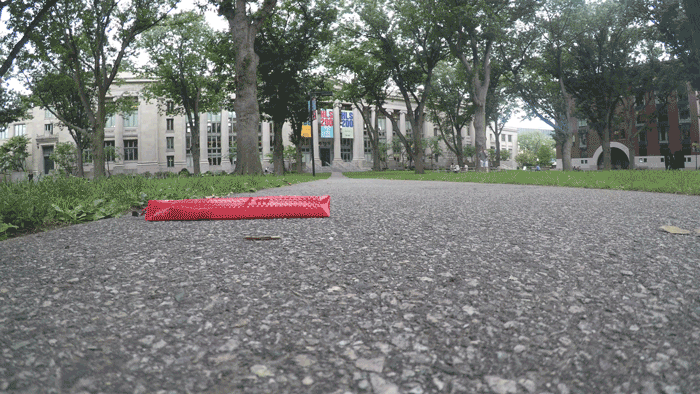
Harvard researchers built a fully untethered, soft robot, with integrated on-board control, sensing, actuation and power supply packed into a tiny tail. (Image courtesy of Ahmad Rafsanjani/Harvard SEAS)
The researchers built a fully untethered robot, with its integrated on-board control, sensing, actuation and power supply packed into a tiny tail. They tested it crawling throughout Harvard’s campus.
The team experimented with various-shaped cuts, including triangular, circular and trapezoidal. They found that trapezoidal cuts — which most closely resemble the shape of snake scales —gave the robot a longer stride.
“We show that the locomotive properties of these kirigami-skins can be harnessed by properly balancing the cut geometry and the actuation protocol,” said Rafsanjani. “Moving forward, these components can be further optimized to improve the response of the system.”
“We believe that our kirigami-based strategy opens avenues for the design of a new class of soft crawlers,” said Katia Bertoldi, the William and Ami Kuan Danoff Professor of Applied Mechanics and senior author of the paper. “These all-terrain soft robots could one day travel across difficult environments for exploration, inspection, monitoring and search and rescue missions or perform complex, laparoscopic medical procedures.”
Learn more: Snake-inspired robot uses kirigami to move
The Latest on: Friction-assisted locomotion
[google_news title=”” keyword=”Friction-assisted locomotion” num_posts=”10″ blurb_length=”0″ show_thumb=”left”]
via Google News
The Latest on: Friction-assisted locomotion
- Find The Best Assisted Living Facilities Near You In 2024on May 14, 2024 at 11:20 pm
If you or a loved one starts to feel like solo living is becoming more of a burden than a blessing, it may be time to consider assisted living. These communities provide a range of services ...
- motion sensingon May 12, 2024 at 5:00 pm
A few years ago, there was a rush of products on the market to detect motion. The idea being you could interact with your computer like they do on science fiction movies, with giant expressive ...
- The Hydrostatic Paradoxon May 9, 2024 at 4:59 pm
In this case, no motion would take place unless ose of the springs were assisted by an additional force. The two forces would be in equilibrium. Now, when a small column of water supports a larger ...
- A miniature wireless robot that can effectively move through tubular structureson May 1, 2024 at 4:05 am
"Currently, the anchoring force that balances flow resistance acting on the robot's body is provided by the wheel friction force," Hu added. "To ensure stable locomotion in tubes with high flow ...
- Water Heated by Frictionon April 9, 2023 at 5:00 pm
During the exhibition at the New York Crystal Palace in 1853, I had many opportunities to notice the effect of friction on the ... orifice when the pump was in motion. This motion in an atmosphere ...
- Forces, motion and energyon March 11, 2023 at 3:13 am
Friction is a force that opposes motion. It is present whenever two surfaces rub over each other, such as when you rub your hands together, or when you apply the brakes on a bike or in a car.
- Linear Actuators Informationon June 25, 2022 at 10:21 am
The motion of the nut around the screw is assisted by the ball bearings. This reduces friction, distributes the load, and increases the lifetime predictability over a lead screw design. The advantages ...
- What is friction?on April 29, 2022 at 3:13 am
Friction is a force between two surfaces that are sliding, or trying to slide, across each other. For example, when you try to push a book along the floor, friction makes this difficult.
- The Rise And Fall Of The Fan Caron March 5, 2021 at 2:39 am
The equation for dynamic friction states that the friction force generated, or grip in our case, is equal to the dynamic coefficient of friction, determined by the materials involved, and the ...
- Primate Locomotionon August 17, 2020 at 8:55 am
Primate locomotion is the study of movements and postures in arboreal and terrestrial environments. Primates are masters of life in the trees, primarily due to their grasping hands and feet.
via Bing News








